Welding, as we know it today, is a highly versatile and reliable metal joining method, but do you know where it all started? Carbon arc welding (CAW) was the first ever welding method that was invented back in the 1800s.
Since then, the original form of arc welding has been improved for the convenience of the welders, and the methods have become more reliable.
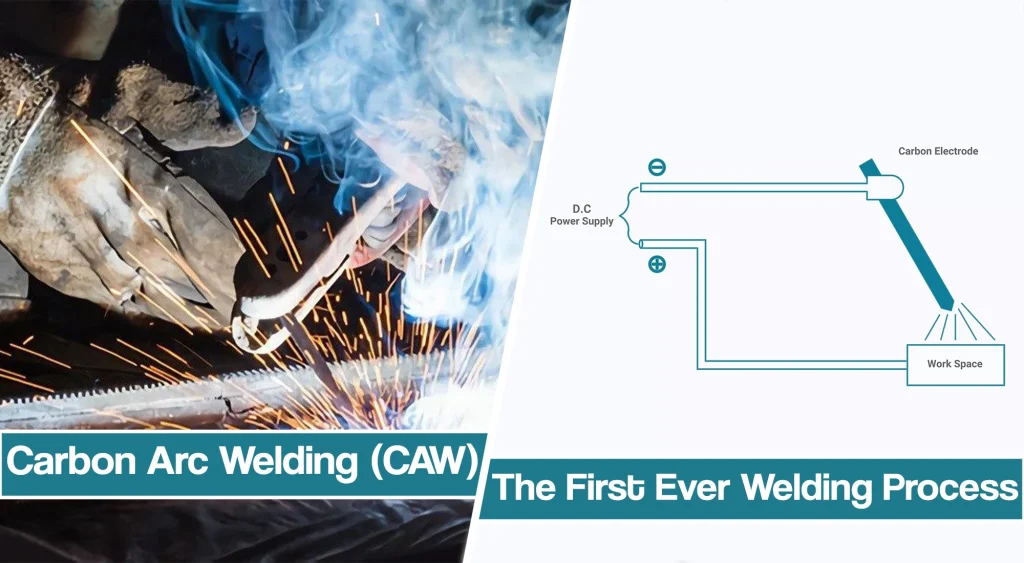
Even though it is scarce, carbon arc welding can be seen today. Today, we will talk about the fundamentals of carbon arc welding (CAW), its applications, advantages, and drawbacks.
Key Takeaways
- What is carbon arc welding used for?
Carbon arc welding is used for welding ferrous and non-ferrous metals such as copper, steel, thin stainless steel, or other metals that are not vulnerable to carbon particles.
- Who made carbon arc welding?
Carbon arc welding was invented and patented in 1881 by Nikolay Benardos and Stanisław Olszewski, but their work was based on the 1800 invention of the electric arc by Sir Humphry Davy.
- Which supply is used for carbon arc welding?
Single electrode carbon arc welding utilizes DCEN (Direct Current Electrode Negative) power source, while twin carbon arc welding is always done with an AC supply.
What Is Carbon Arc Welding?
Carbon arc welding (CAW) is the first-ever welding method that was invented by Nikolay Benardos, and Stanisław Olszewski, who developed it in 1881, and soon enough got the patent. However, their work was based on Sir Humphry Davy’s invention of the electric arc in 1800, and it would be impossible without it.
CAW utilizes a non-consumable carbon electrode to create an arc. The electric arc is formed between the carbon electrode and workpiece.
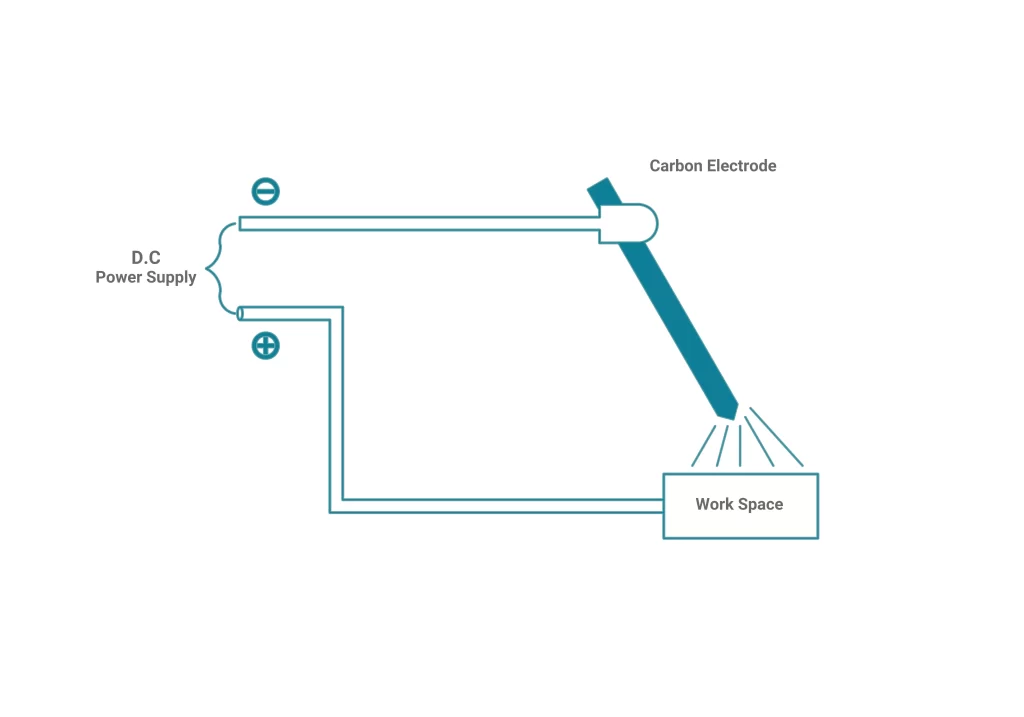
The heat generated by the arc reaches 6,500 degrees Fahrenheit, which is enough to melt two parts. The molten metal joins by fusion (autogenous welding process), and the filler rod can be added if the gap is more significant.
If you are a new welder, the carbon arc welding process might remind you of either GTAW or shielded metal arc welding (SMAW). The carbon electrode is placed in the electrode holder, similar to Stick, and the filler metal is added separately, like in the TIG welding process.
Carbon Electrode Choice
As the name states, carbon arc welding utilizes carbon electrodes, commonly sized from 1/8″ up to nearly 5/16 inch. Since carbon form can differ on various factors, there are two carbon electrodes: baked carbon and graphite.
A baked carbon electrode is used due to economics since it can last significantly longer than a graphite electrode. However, baked electrodes result in a less stable arc and somewhat higher noise. Graphite electrodes offer a smoother arc that is easily controlled due to more brittleness and hardness. They are also less noisy and can withstand higher current densities, but they tend to wear out more.
The carbon electrode holder is visually similar to the Stick welding equipment. However, due to high temperatures, the holder gets really hot, so it requires air cooling supplied by an external air compressor. Compared to stick welding, CAW holders clamp the carbon electrode somewhere in the middle.
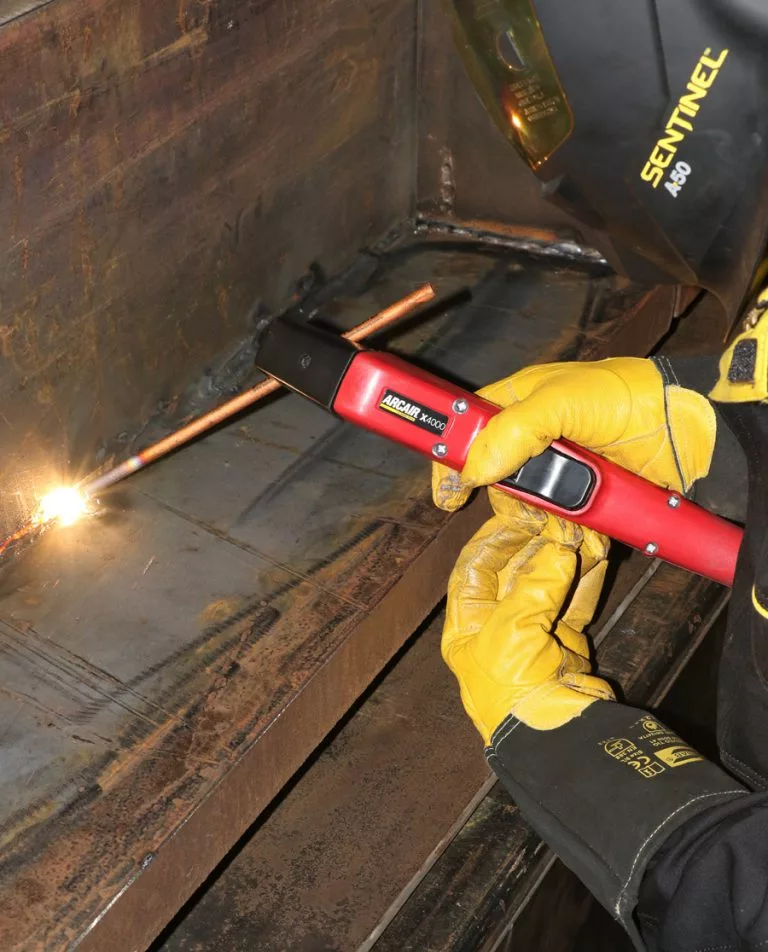
Power Source For Carbon Arc Welding
While most modern welding processes can run on both AC/DC supply, the carbon arc welding process is limited to Direct current electrode negative (DCEN).
The electrode is always connected to the negative terminal of the welder. That way, the electrons flow and concentrate the welding temperature onto the workpiece rather than the electrode.
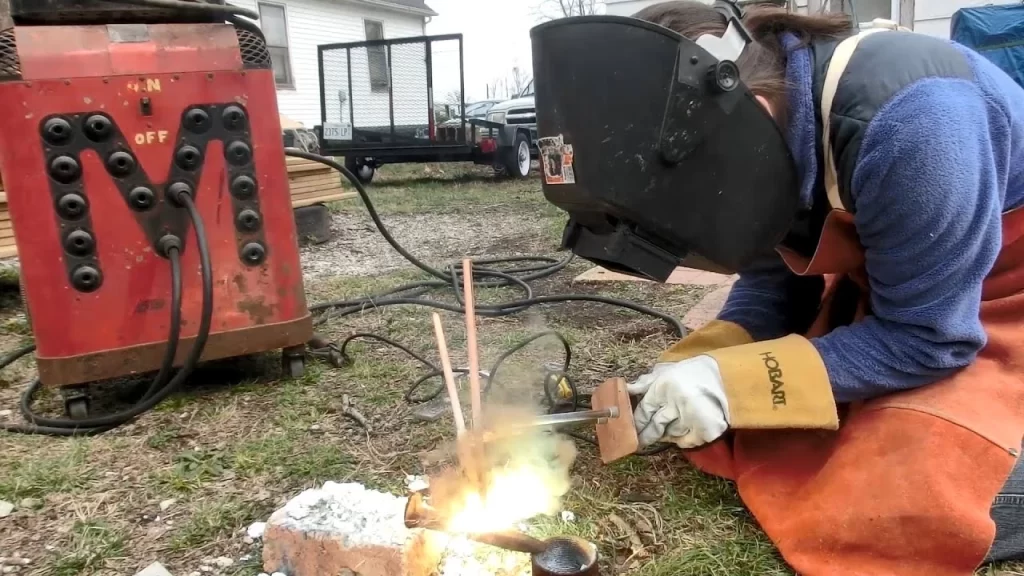
Switching to the DC+ polarity would cause electrons to concentrate heat on the electrode tip. As a result, the carbon electrode would erode, and there are chances of carbon getting into the weld pool.
Similarly, alternating current AC in carbon arc welding can cause erosion and carbon contamination. However, there is an exception where case AC supply is used in the twin carbon arc welding process, but we will discuss it further in the text.
Properties of Carbon Arc Weld And Weldable Materials
While carbon arc welding was good enough in many applications once it was invented, it soon found a fewer use. The sole reason that made CAW unfavorable was the carbon electrodes. They are not suitable for any metal whose properties could be downgraded due to the presence of carbon.
Defects caused by carbon particles in weld puddle made inventors think, so carbon dioxide shielding was soon introduced.
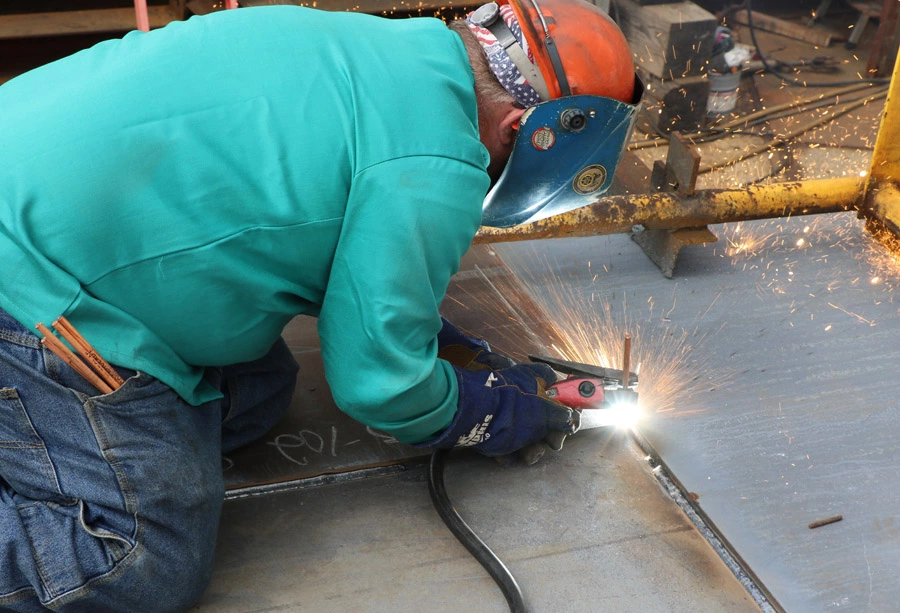
Shielded carbon arc welding, therefore, uses external carbon dioxide gas that protects the weld pool from interacting with oxygen from the atmosphere
Even though the results were better, carbon arc welding is still suitable for welding non-ferrous metals, certain steels, and cast iron. Like braze welding, CAW is a suitable method for welding copper when a bronze metal electrode (filler material) is introduced.
Applications of Carbon Arc Welding Process
Due to unfavorable properties such as contamination, porosity, and poor arc characteristics, carbon arc welding is slowly going out of service. Other welding processes are seeing significantly more applications, but CAW can still be used in welding thin high-nickel alloys, galvanized sheets, or thinner gauges stainless steel.
The CAW is a preferable welding process due to significantly cheap equipment, and it can also be automated. High deposition rates and weld speed, combined with cheap equipment, make carbon arc welding a cost-efficient but not so popular method today.
Twin carbon arc welding
To deal with some common issues of the CAW, the investors came up with an idea. They combined two electrodes with a special electrode holder, often referred to as a torch, to get more heat and reliable results.
Unlike carbon arc welding, the twin carbon process creates an electric arc between two electrodes, not a workpiece and electrode. As a result, welders can carry out the arc to work, not the opposite.
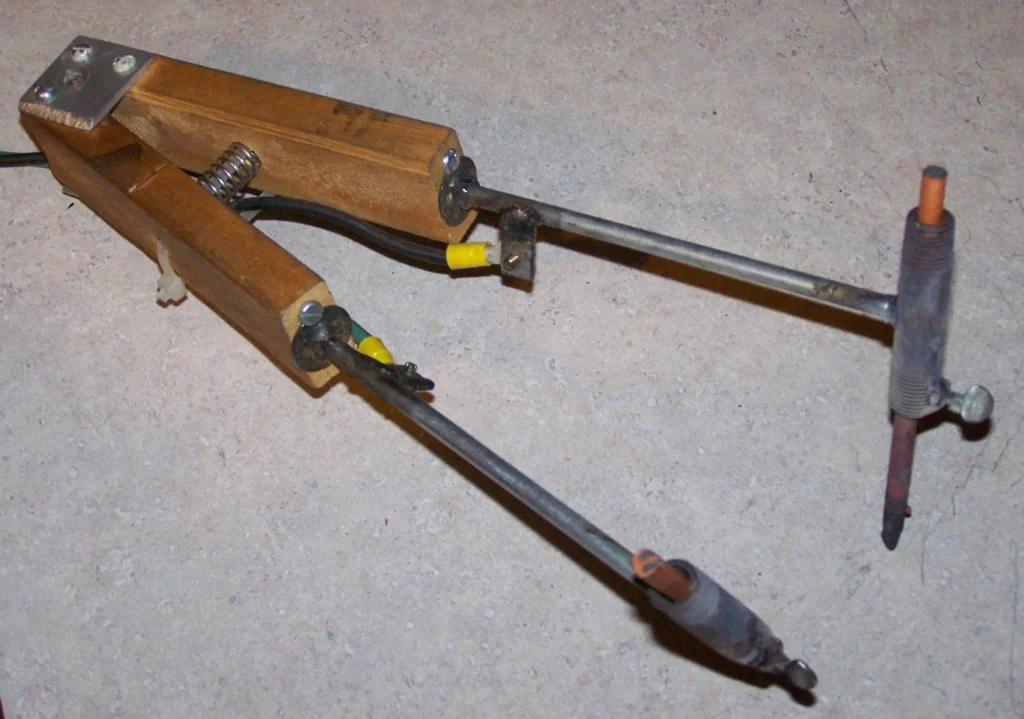
The arc starts once the welder brings two electrodes together, and the big advantage is the ability to control the electric arc length.
Compared to carbon arc welding, the twin carbon electrode process utilizes an AC supply. Alternating current provides limited heat input, as the arc heats up enough to melt and cut metals, but they wear out at equal rates. On the other hand, DC supply would cause the positive electrode to consume and erode much faster than the negative electrode, outputting unstable and uneven results.
Carbon Arc Gouging and Cutting
Since carbon arc welding and twin carbon processes produce high heat, they can be utilized to gouge or cut metals. In certain developing countries, they are even used to replace oxyacetylene torches due to lower prices of equipment and costs.
By tuning up the power, the arc produced by CAW heats up enough to burn through the parent metal. The thicker the material is, the CAW process requires a higher welding current.
While it is a highly economical choice in cutting, carbon arc produces poor edge results. Therefore, welders use it when there is no proper cutting equipment (oxyacetylene or plasma) or when they want to save money.
Advantages and Drawbacks of Carbon arc welding
Advantages
- A cost-efficient method with high depositions and low-cost equipment
- Less skill to operate is required compared to other processes
- The temperature is easily controlled by adjusting the arc length
- It can be used to weld steel, thinner gauges of stainless steel, copper, and other non-ferrous metals
- The process can easily be automated
- The excellent and cheap heat source for preheating, soldering, brazing and braze welding
- TCAW is more versatile than standard SAW
Drawbacks
- An unstable arc and arc blow can occur if parts and base metal is not clamped tightly, producing a low-quality weld
- Porosity can occur if there is no shielding gas
- Due to electrode erosion, carbon particles can get into a molten pool, causing defects and negatively affecting the properties of the weld
- CAW can be slow once filler metal is required
- Requires twice as high current to produce the same heat as other welding processes
Final Thoughts
Carbon arc welding is the oldest welding method, and it is cost-efficient and cheap, but only in certain applications. Due to poor weld performance and quality weld, and combined with carbon defects, it is widely replaced by many modern methods such as Stick or TIG.
Nonetheless, CAW can be a suitable heat source for cutting, brazing, and soldering, and it can costly weld metals that are not affected by carbon. Even though these situations are rare, some still thrive from it, regardless of the fact that the exact number is pretty low.





